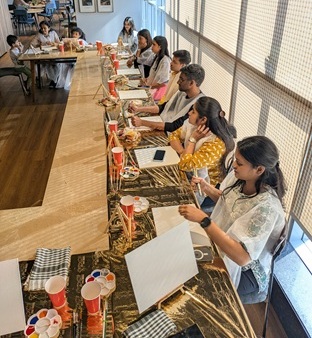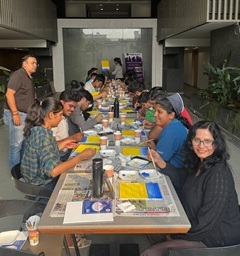The intricate designs and patterns of Aipan folk art tell the story of Kumaoni traditions and customs.

The folklore is that goddess Parvati, wife of Lord Shiva, was the first to create Aipan designs as a way to adorn her home and invite blessings from the gods.

As the story goes, Parvati was so skilled in the art of Aipan that her designs were said to come to life, bringing good luck and prosperity to her family. The goddess then taught the art of Aipan to her husband, Lord Shiva, and the tradition of creating Aipan designs was passed down through generations of Kumaoni families.
Historically Aipan is said to be originated from Almora during the rule of Chand dynasty.
Over time, Aipan became a central part of Kumaoni culture, and it was used to decorate homes and to mark important life events and celebrations. Aipan designs were created during religious ceremonies, such as weddings and festivals, as a way to invite the blessings of the gods and to bring good luck and prosperity to the families involved. It is also said that it wards off evil spirits.
Aipan is typically created using natural pigments made from rice flour and other locally available materials. On brick walls colored with red (Geru) color, the art has a vibrant appeal.
The designs used in Aipan are geometric, floral and figurative, and they often have a symbolic meaning. For example, a swastika is commonly used as a symbol of good luck and prosperity. Similarly, the lotus flower is a symbol of purity, while the conch shell represents strength and power.
Various popular forms of Aipan are:
There are more motifs then mentioned above which are for special occasions or to worship other gods.
One of the most interesting things about Aipan is that it is not just a form of art, but also a spiritual practice. The process of creating an Aipan is believed to be therapeutic and meditative, and it is said to bring peace and balance to the mind and body. The repetitive patterns and the focus required to create the intricate designs can be a form of mindfulness, helping to calm the mind and bring a sense of calm to the artist.
In recent years, Aipan has gained popularity and recognition outside of the Kumaon region, and it is now considered an important part of India’s cultural heritage. The Indian government has even taken steps to preserve and promote the art form, with efforts to document and digitize the traditional designs used in Aipan.
Image credit:

Create, Connect, Collaborate!
